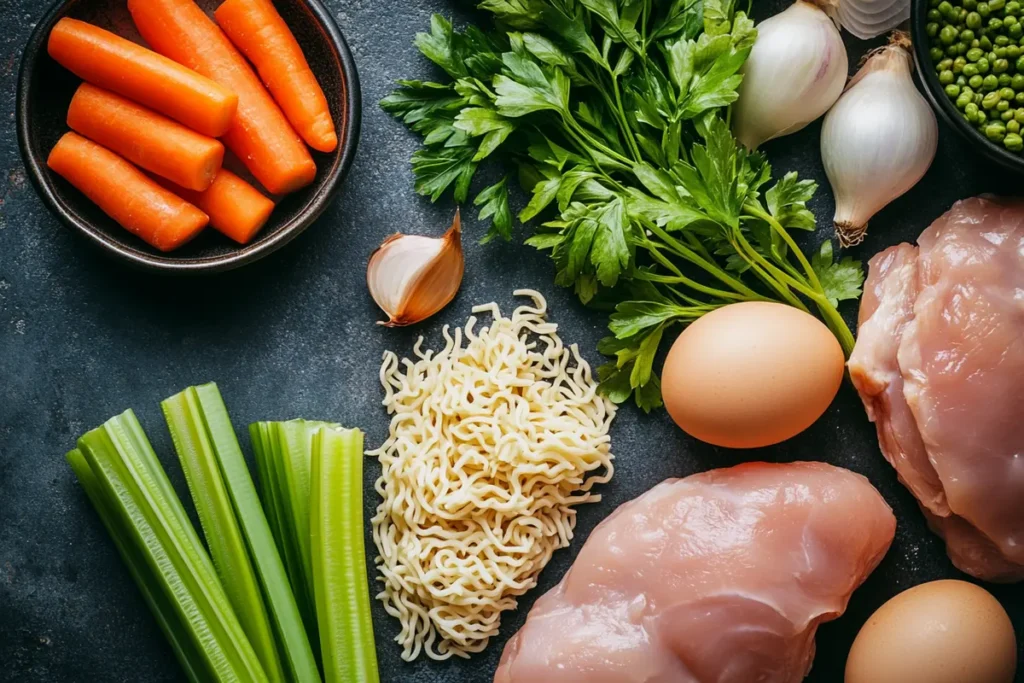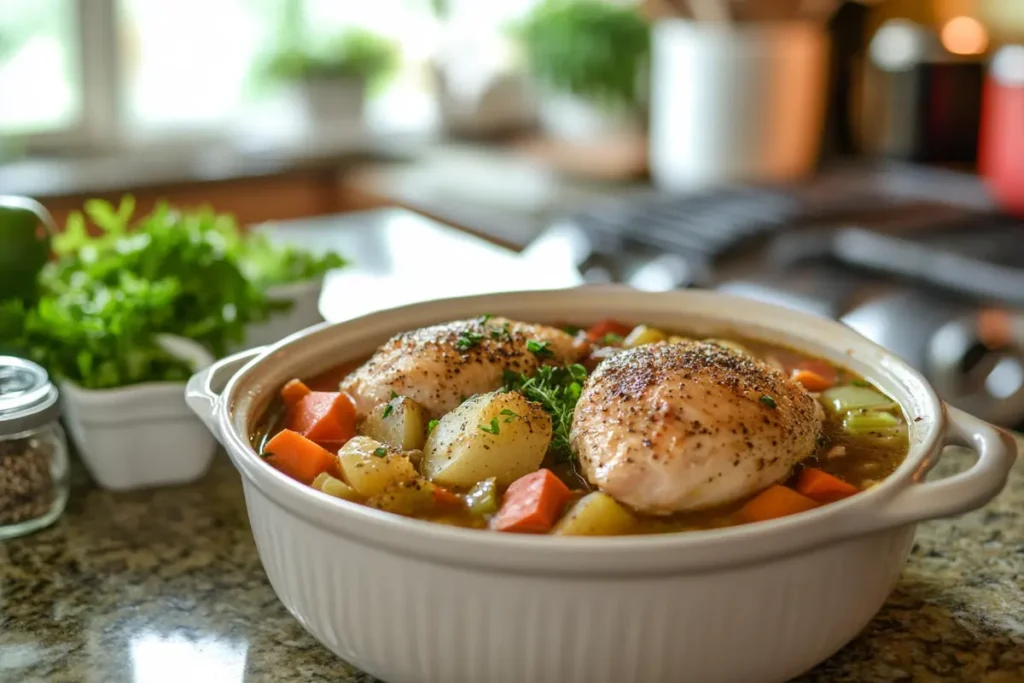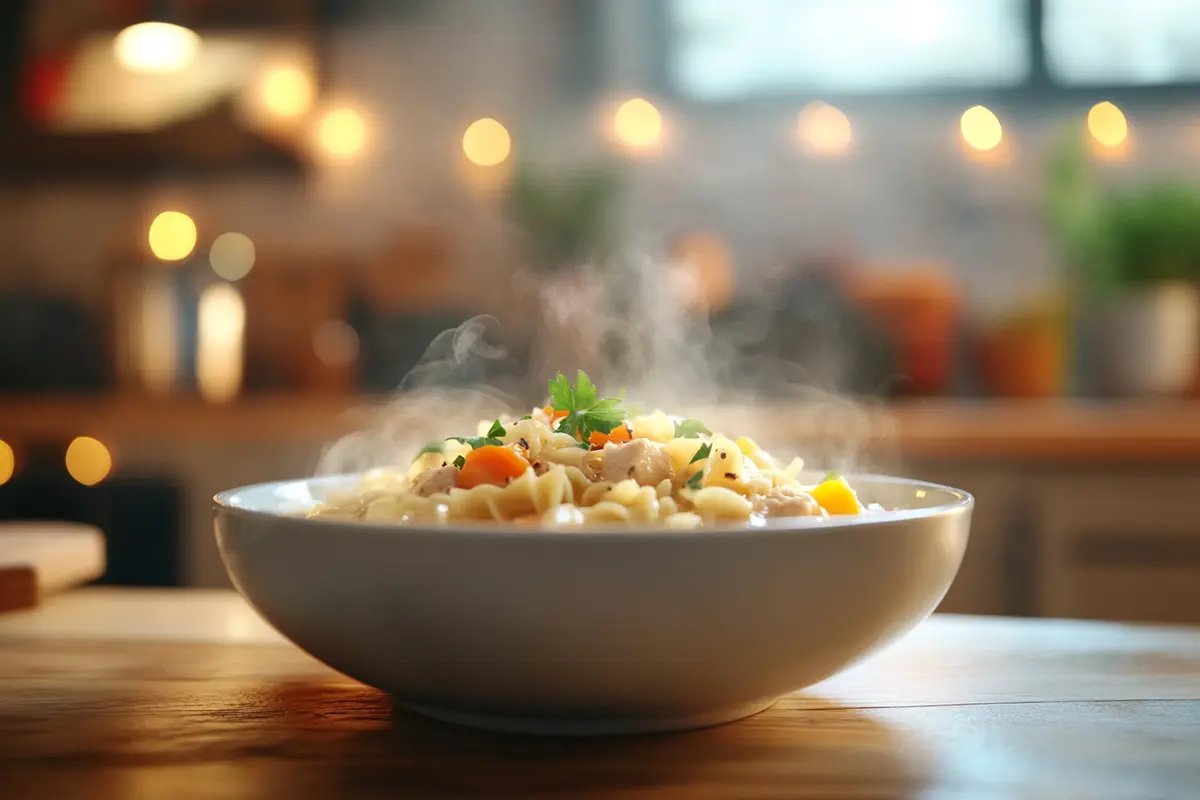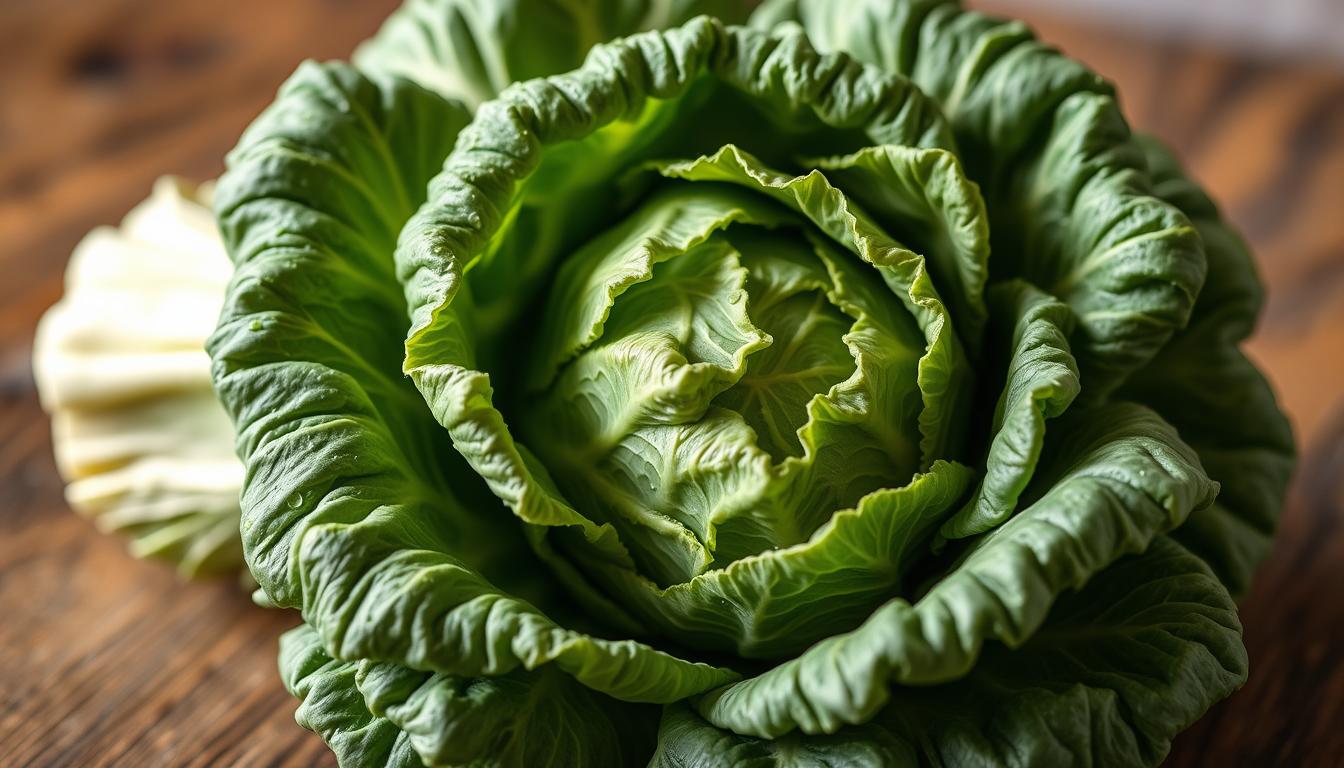Are you ready to dive into a chicken noodle soup recipe that not only warms your belly but also brings a comforting wave of nostalgia? This delicious dish is a staple in many homes, and it’s easy to understand why. With its rich broth, tender chicken, and slurpable noodles, it’s practically a universal symbol of cozy comfort. In this comprehensive guide, you’ll learn everything you need to know about preparing the best chicken noodle soup recipe, from selecting the right ingredients to mastering the final finishing touches. Let’s roll up our sleeves and explore all the secrets behind this hearty favorite!
1. Understanding the Appeal of Chicken Noodle Soup
Chicken noodle soup has been cherished for generations. From its humble origins as a nourishing meal to help ward off colds and sniffles, it has evolved into a culinary tradition that transcends cultural boundaries. Nearly everyone has a memory associated with warm bowls of this classic dish—be it from childhood afternoons spent recovering from a fever or holiday gatherings with relatives you don’t see very often.
2. Key Benefits of Making Your Own Chicken Noodle Soup at Home
When you hear the phrase “chicken noodle soup recipe,” you might instantly think of canned versions from the grocery store. While those can be convenient, nothing compares to preparing it fresh in your own kitchen. Home cooking allows you to control the level of sodium, choose high-quality ingredients, and adjust the flavor profile to your liking.
Here are a few key benefits of making your own chicken noodle soup recipe at home:
- Fresh, Quality Ingredients: You get to choose what goes into your soup. Pick organic chicken, fresh vegetables, and high-grade seasonings without worrying about preservatives or excessive salt.
- Personalized Taste: Love garlic? Add more cloves. Crave a bit of heat? Stir in chili flakes or diced jalapeños. By making it yourself, you can tailor flavors to create the perfect soup for you and your family.
- Nutritional Advantages: Homemade versions typically have fewer additives and can pack a healthier punch, particularly if you add nutrient-rich vegetables. You can also choose a low-sodium broth to keep your salt intake in check.
- Cost-Effectiveness: Although canned soup seems inexpensive, making your own can be surprisingly economical, especially if you plan to serve multiple portions or freeze leftovers for later.
- Emotional Fulfillment: There’s something deeply satisfying about cooking a comforting meal from scratch. It fosters a connection with your food and provides a sense of accomplishment, especially when you see friends or family slurping it down with contentment.
3. Gathering the Essential Ingredients
Before you embark on cooking your chicken noodle soup recipe, it’s important to gather all the necessary components. Quality matters, so look for the freshest produce and poultry you can find. The right ingredients will dramatically improve the flavor of your finished dish. Below are the essential building blocks:
- Chicken: Opt for bone-in chicken if possible, as bones contribute extra depth to the broth. Chicken thighs are particularly succulent, but a combination of thighs and breasts works just as well. If you prefer boneless cuts, that’s fine too—just be aware that the broth might be slightly less rich.
- Broth or Stock: Homemade chicken stock is always best. However, if you’re short on time, you can use a good-quality store-bought chicken broth. Look for labels indicating “low sodium” so you can better control salt levels.
- Noodles: The type of noodles can vary based on personal preference. Wide egg noodles are the most traditional, but you could experiment with rotini, fusilli, or even ramen noodles for a fusion spin. If you’re gluten-free, there are plenty of rice or quinoa-based noodle options on the market.
- Vegetables: Carrots, celery, and onions are part of the timeless mirepoix trio that forms the backbone of many soups. Additionally, garlic is an absolute must for its aroma and flavor boost.
- Seasonings & Herbs: Common herbs and spices include thyme, parsley, bay leaves, salt, and pepper. A little pinch of oregano or rosemary can add extra depth. For a gentle, peppery flavor, consider a dash of white pepper.
- Fats: While not strictly required, a bit of olive oil or butter will help sauté your vegetables and infuse the dish with richness.
Take a moment to assess your pantry and fridge. Once you have these ingredients at hand, you’ll be fully equipped to proceed with your chicken noodle soup recipe.
4. Helpful Tools and Equipment
While preparing chicken noodle soup doesn’t demand fancy gadgets, certain kitchen tools make the process smoother and more efficient. Here’s a short list of items that will come in handy:
- Large Stockpot or Dutch Oven: You need a roomy pot with a sturdy base to ensure even heat distribution. The size is especially important if you’re planning to make multiple servings.
- Sharp Knives and Cutting Board: Chopping vegetables and herbs is a major part of soup prep. A reliable chef’s knife or a good paring knife will help you zip through the process without hassle.
- Ladle: A basic but useful tool for stirring your soup and scooping up portions without making a mess.
- Meat Thermometer (Optional): This helps to ensure your chicken is cooked to a safe internal temperature of 165°F (74°C). Alternatively, you can rely on visual cues (clear juices and no pinkness).
- Strainer or Slotted Spoon (Optional): If you choose to make your own stock from scratch, you’ll need these to remove bones or other solids after simmering.
Equipping your kitchen with the proper tools creates a comfortable and enjoyable cooking environment, which often translates into better results for your chicken noodle soup recipe.
5. Step-by-Step Guide to Preparing Your Chicken Noodle Soup

Now that you have all your ingredients and tools lined up, it’s time to put everything together. Here’s a straightforward, step-by-step chicken noodle soup recipe process that’s easy to follow, even for first-timers:
- Sauté Your Vegetables: Warm some butter or olive oil in a large pot over medium heat. Add diced onions, carrots, and celery. Stir frequently to avoid browning. After about five minutes, toss in minced garlic. Cook until these vegetables turn slightly tender and aromatic.
- Add Chicken and Seasonings: Place the chicken pieces into the pot with the vegetables. Sprinkle in salt, pepper, thyme, and any other herbs you love, like oregano or rosemary. Sear the chicken briefly so it browns on the outside, which helps develop a deeper flavor in the broth.
- Pour in Broth: Once the chicken is lightly browned, carefully pour in the broth or stock. If you’re using homemade stock, make sure you’ve strained out any leftover bones or debris. Stir gently to combine flavors. Bring the mixture to a gentle boil.
- Skim the Foam: You might notice foam or scum rising to the surface. Use a slotted spoon or skimmer to remove it. Eliminating excess foam ensures a cleaner taste and a clearer broth.
- Simmer and Cook Thoroughly: Reduce the heat to low, cover the pot, and let the soup simmer for about 20-25 minutes, or until the chicken is thoroughly cooked. Bone-in pieces may require a slightly longer simmer.
- Shred the Chicken: Remove the chicken pieces and place them on a cutting board or plate. Shred them using two forks (or cut into bite-sized cubes if you prefer chunkier pieces). Discard any bones, skin, or gristle.
- Return Shredded Chicken to the Pot: Add the shredded chicken back into the soup. This is also the perfect time to check your seasonings. You can add more salt, pepper, or herbs depending on your preference.
- Cook the Noodles: Gently stir in your noodles. Allow them to cook according to the package instructions. Keep an eye on them to avoid overcooking. Mushy noodles can make the overall texture less appealing.
- Taste and Adjust: Always taste your soup before you decide it’s done. You may want more pepper, a dash of hot sauce for heat, or an extra pinch of herbs. This step is essential for achieving the flavor you crave.
- Serve and Garnish: Ladle the steaming soup into bowls. For an extra flourish, garnish with chopped parsley or a drizzle of extra-virgin olive oil. Serve immediately while the soup is still piping hot.
By following these simple steps, you’ll end up with a chicken noodle soup recipe that’s brimming with comforting flavors.
6. Perfecting the Broth for Maximum Flavor
The broth is the heart and soul of any chicken noodle soup recipe. A well-executed broth enriches the soup with layers of savoriness that make every spoonful irresistible. If you have time to spare, you can take your soup to the next level by creating your own homemade stock. Here’s how:
- Collect Chicken Bones and Scraps: Whenever you cook chicken, save the bones, necks, and any leftover meat. Store them in the freezer until you’re ready to make stock.
- Roast the Bones (Optional): For a deeper, roasted flavor, you can place the bones on a baking sheet and roast them in the oven at around 400°F (200°C) for 30-45 minutes, turning them occasionally.
- Combine Vegetables and Aromatics: In a large pot, sauté onions, carrots, and celery until slightly caramelized. Then add your roasted bones.
- Add Water and Simmer: Pour cold water over the bones and vegetables until everything is submerged. Bring it to a gentle simmer. Avoid rapid boiling, as it can cause the broth to become cloudy.
- Skim and Season: Use a spoon to remove any foam that surfaces. Add a few bay leaves, peppercorns, and fresh or dried herbs like thyme. Simmer for at least two hours, but longer (four to six hours) will extract even more flavor.
- Strain and Store: Once the broth has simmered to your liking, strain it through a fine-mesh sieve. Discard the solids. Let the broth cool and store it in the fridge or freezer. A thin layer of fat may form on top; you can remove it or stir it in for added richness.
By crafting your own stock, you guarantee that your chicken noodle soup recipe has an unparalleled depth of flavor. And if you don’t have enough time, don’t worry—a good store-bought broth can still produce a fantastic meal when combined with quality ingredients.
7. Popular Variations and Fun Twists
While the classic chicken noodle soup recipe will forever hold a special place in our hearts, you don’t need to limit yourself. There are many exciting ways to put a spin on this beloved dish. Here are a few popular variations worth trying:
- Herb-Infused Soup: If you’re crazy about aromatic herbs, increase the amounts of thyme, rosemary, or even sage. A citrusy twist of lemon zest or lemongrass can also brighten the flavors.
- Asian-Inspired Broth: Add soy sauce, ginger, and a splash of sesame oil for a fragrant, Eastern flair. Throw in bok choy, mushrooms, or green onions in place of celery for extra authenticity. You could even use rice noodles instead of egg noodles.
- Creamy Chicken Noodle Soup: For those who adore cream-based soups, stir in a cup of heavy cream or half-and-half near the end of the cooking process. This results in a velvety version that feels wonderfully indulgent.
- Spicy Kick: If you enjoy heat, add diced jalapeños or chili flakes. You can also include cayenne pepper or a dash of hot sauce for an extra zing that enlivens the bowl.
- Vegetable-Packed Soup: Don’t hold back on colorful veggies—bell peppers, zucchini, peas, or corn can amplify both taste and nutrition. The more variety you introduce, the heartier your soup becomes.
Ultimately, any variation of chicken noodle soup still offers a comforting experience. Don’t be afraid to tweak your recipe based on what you have available in the fridge or your personal culinary style. You may discover a new favorite in the process!
8. Pairing Suggestions and Serving Ideas
A steaming bowl of chicken noodle soup can be a complete meal on its own, but pairing it with other simple dishes can transform an ordinary night into a well-rounded feast. Consider these ideas for elevating your soup experience:
- Crusty Bread or Biscuits: Freshly baked bread, such as a baguette or sourdough loaf, makes an excellent companion to soup. It’s perfect for soaking up the broth. Buttery biscuits or cornbread also work beautifully.
- Grilled Cheese Sandwich: Chicken noodle soup and a grilled cheese sandwich is a classic combo that appeals to kids and adults alike. The cheesy richness of the sandwich balances the soup’s lighter character.
- Side Salad: Go for a crisp green salad with tomatoes, cucumbers, and a light vinaigrette to add some crunch and tang. A colorful salad offsets the heartiness of the soup.
- Garlic Bread: If you enjoy more savory flavors, garlic bread is a popular choice. The aromatic garlic butter can complement the herbal notes in the soup.
- Wine or Beverage Pairing: While soup may not seem like a typical candidate for wine, a light-bodied white wine such as Pinot Grigio or Sauvignon Blanc can pair nicely. If you prefer non-alcoholic options, try herbal tea or a sparkling fruit juice.
When it comes to serving your soup, a rustic presentation adds to the cozy ambiance. For an extra flourish, bold a finishing drizzle of extra-virgin olive oil and sprinkle chopped parsley on top. From dinner parties to casual family meals, a well-presented chicken noodle soup recipe can easily take center stage.
9. Potential Health Perks of Chicken Noodle Soup
We’ve all heard about the supposed health benefits of chicken noodle soup, particularly when it comes to fighting colds or the flu. While it’s not a cure-all, there are valid reasons why this dish might help you feel better.
- Hydration: The soup’s high water content helps keep you hydrated, which is crucial if you’re feeling under the weather or experiencing congestion.
- Nutrient-Rich Ingredients: Chicken provides protein, while the vegetables supply vitamins, minerals, and antioxidants. A well-made broth can also contain essential electrolytes.
- Steam and Warmth: Sipping hot soup produces steam, which may temporarily soothe nasal passages. The warmth can feel comforting if you have a sore throat or mild aches.
- Reduced Sodium (If Homemade): Commercial soups often contain high levels of sodium. By making your own, you can manage the salt content and avoid excessive sodium intake.
- Emotional Comfort: Let’s face it—food doesn’t just nourish our bodies; it also feeds our souls. A steaming bowl of chicken noodle soup can offer a sense of relief and comfort that’s hard to measure in scientific terms.
While chicken soup isn’t an official prescription for anything, it’s still a comforting meal loaded with beneficial ingredients. Whether you’re nursing a cold or simply craving something wholesome, a well-prepared chicken noodle soup recipe can perk up your day in more ways than one.
10. Common Mistakes to Avoid
Despite its simplicity, certain oversights can compromise the quality of your chicken noodle soup recipe. To ensure a perfect outcome, be aware of the following pitfalls:
- Overcooking the Chicken: Chicken that’s left to simmer too long becomes dry and stringy. Keep an eye on cooking times, removing the chicken once it’s done and shredding it separately before returning it to the pot.
- Mushy Noodles: Adding noodles too early can turn them into a gummy mess. Introduce them toward the end of the simmering process to keep them al dente.
- High Heat Boiling: A rapid boil can cause the vegetables to lose their texture and the broth to turn cloudy. Gentle simmering helps maintain clarity and flavor.
- Skipping the Skim: Foam and scum that rise to the top during simmering can impart a bitter taste. Skim it off with a spoon or ladle whenever possible.
- Under seasoning: Taste your soup frequently, especially before serving. Adjust salt, pepper, and herbs as needed to achieve a balanced, robust flavor.
- Ignoring Texture: Pay attention to the texture of vegetables. Carrots and celery should be tender but still have some bite left. Overcooked veggies can turn the soup into an unappealing mush.
Avoiding these common missteps ensures that your chicken noodle soup recipe consistently turns out delicious and visually appealing.
11. Storing and Reheating Leftovers
One of the joys of making a large pot of chicken noodle soup is having leftovers that make for quick meals in the days to come. However, there’s a right way and a wrong way to store and reheat your soup:
- Allow the Soup to Cool: Before storing, let your soup cool at room temperature for about 30 minutes. Don’t leave it out too long, though, to avoid bacterial growth.
- Use Airtight Containers: Transfer your soup to containers with secure lids. You can portion it out if you prefer smaller servings for lunches or dinners. Store them in the fridge for up to three or four days.
- Freeze for Longer Storage: If you want your soup to last beyond a few days, consider freezing it. Omit or undercook the noodles if you plan to freeze it, as thawed noodles can become too soft. Add fresh noodles when you’re ready to reheat.
- Reheat Gently: When reheating, do so over medium heat on the stovetop. Stir often to ensure even heating. If using a microwave, reheat in short intervals and stir in between.
- Adjust Seasoning: Soup flavors often meld and deepen as they rest. You might find the next day’s bowl even tastier. However, give it a taste test to see if it needs more salt or seasoning.
By following these recommendations, you can safely enjoy your chicken noodle soup recipe for days, possibly even weeks if stored properly in the freezer.
12. Tips for a Restaurant-Quality Presentation

Even a humble bowl of chicken noodle soup can be dressed up to rival a restaurant presentation. If you want to impress your guests or simply treat yourself to a fancy dinner at home, try these tips:
- Use Quality Bowls: A wide, shallow bowl allows you to showcase the vibrant colors of the vegetables, chicken, and noodles. White plates or bowls create a neutral canvas that makes the soup stand out.
- Tasteful Garnishes: Fresh herbs like parsley, dill, or microgreens add a pop of color. Drizzle a few drops of extra-virgin olive oil or swirl in a spoonful of heavy cream for visual flair.
- Neatly Sliced Vegetables: Cutting vegetables into uniform shapes elevates the soup’s look. Consider using a mandoline or practicing your knife skills for consistent slices.
- Artful Placement of Chicken and Noodles: Make sure each bowl has an even distribution of broth, chicken, noodles, and vegetables. A well-balanced mixture showcases all the components.
- Season at the End: Sprinkle a pinch of coarse sea salt and freshly ground black pepper right before serving. That final seasoning not only boosts flavor but also adds texture, because the salt crystals and pepper flecks remain visible.
With these presentation tricks up your sleeve, even something as classic as chicken noodle soup can feel like a special, restaurant-worthy meal. Presentation often influences our perception of taste, so taking a few extra moments to arrange your bowl in a visually appealing way can have a significant impact.
13. Frequently Asked Questions (FAQs)
Q1: Can I use pre-cooked or rotisserie chicken for this soup?
Absolutely! Using rotisserie chicken cuts down on cooking time and still yields a flavorful broth, especially if you simmer the bones along with your store-bought stock. Just shred or chop the meat, add it to your soup during the final stage, and you’re good to go.
Q2: How can I make my chicken noodle soup recipe thicker?
If you prefer a soup with a thicker consistency, you can create a slurry by whisking together cornstarch and cold water, then stir it into the simmering broth. Alternatively, add a roux made of butter and flour for a creamier base.
Q3: What’s the best way to add extra vegetables without overwhelming the soup?
Balance is key. Stick to a moderate amount of each vegetable, and consider the cooking times required. Hard vegetables like potatoes or butternut squash should be added earlier, while softer greens like spinach or peas are best added toward the end.
Q4: Are there vegan or vegetarian alternatives?
Yes! Replace chicken with tofu or chickpeas, and use vegetable broth instead of chicken stock. Add mushrooms or nutritional yeast for an extra savory flavor. Feel free to use vegan-friendly noodles as well.
Q5: Is it safe to freeze chicken noodle soup with dairy in it?
Cream-based soups can sometimes separate or curdle once thawed, but it’s not dangerous. To preserve a smoother texture, freeze the soup without adding dairy. Stir in the cream or milk only when you reheat the soup.
14. Elevating Your Chicken Noodle Soup with Global Flavors
If you’re feeling adventurous and want to break away from traditional norms, consider incorporating global flavors into your chicken noodle soup recipe. We touched on Asian twists, but here are some other culturally inspired suggestions:
- Mediterranean Flair: Add olives, tomatoes, and fresh basil for a bright, sunny flavor profile. A pinch of smoked paprika can also introduce a gentle smokiness.
- Mexican-Style Soup: Incorporate cumin, chili powder, and diced tomatoes. Garnish with cilantro, avocado slices, and a squeeze of lime for a zesty finish.
- Italian Wedding Soup Mashup: Blend elements of Italian wedding soup by adding mini meatballs made from Italian-seasoned ground chicken or turkey. Stir in spinach or escarole for added greens.
- French Onion Influence: Use caramelized onions, thyme, and a splash of sherry wine to echo the essence of French onion soup. Top with croutons or melted cheese if you crave an indulgent finish.
- Caribbean Heat: Jerk spices, scotch bonnet peppers (used sparingly), and coconut milk can deliver an exciting fusion between hot, sweet, and savory.
Experimenting with different ingredients helps keep your cooking fresh and exciting. Who knows—you might stumble upon a brand-new chicken noodle soup recipe that becomes an instant family favorite!
15. The Ultimate Guide to Homemade Broth vs. Store-Bought
While it’s perfectly okay to rely on store-bought broth, going the extra mile with a homemade version can elevate the taste of your chicken noodle soup immensely. Below is a quick rundown of the key differences:
- Flavor Intensity: Homemade broth offers a depth of flavor you might not easily find in commercially packaged brands. Simmering bones and vegetables for hours releases natural collagen and nutrients.
- Customization: When you make broth at home, you decide which herbs and seasonings to include (or exclude). This level of control lets you fine-tune the broth to complement your soup.
- Additive-Free: Many commercial broths contain additives, flavor enhancers, or preservatives. Homemade versions typically have none of those extras unless you choose to add them.
- Price Point: If you have leftover chicken bones or vegetable scraps, homemade broth can be surprisingly cost-effective. However, store-bought can be a time-saver when you need soup on the table fast.
- Effort and Time: Store-bought broth is instant, while homemade requires preparation and cooking time. If you enjoy cooking projects, homemade broth can be a labor of love. But if you’re in a hurry, it’s perfectly fine to open a carton of store-bought stock.
Deciding between homemade or store-bought depends on your schedule and preferences. In either case, you’ll still end up with a delicious chicken noodle soup recipe as long as you use quality ingredients.
16. Hosting a Soup Night: Entertaining Made Easy
Looking for a low-stress way to feed a crowd? Consider hosting a soup night featuring your signature chicken noodle soup recipe. Soup nights are a cozy alternative to elaborate dinner parties. Here’s how to make it memorable:
- Multiple Soup Varieties: Offer at least two types of soup (including chicken noodle soup, of course) to give guests some choice. Consider a vegetarian or cream-based option for variety.
- DIY Garnish Station: Provide fresh herbs, shredded cheese, croutons, chopped green onions, hot sauce, and lemon wedges. Encourage guests to customize their bowls.
- Bread and Condiments: Supply different kinds of bread: garlic bread, cornbread, sourdough, or dinner rolls. A small charcuterie board or cheese tray can also complement the soups.
- Casual Setup: Soup nights work well with a relaxed buffet or family-style setup. Let everyone ladle their own bowl and help themselves to sides.
- Simple Desserts: Keep dessert straightforward. Homemade cookies, brownies, or fruit tarts are quick crowd-pleasers that won’t overshadow the main attraction—your soup.
This approach to entertaining allows you to focus on quality cooking while minimizing fuss. Plus, your guests can experience the cozy delight of a hot, homemade chicken noodle soup recipe in a warm and welcoming environment.
17. Pro Tips for Adding Extra Depth and Complexity
If you’re looking to further enhance your chicken noodle soup recipe, consider these expert techniques to introduce more layers of flavor:
- Sear or Brown the Chicken First: Browning your chicken in a pan before adding it to the soup pot caramelizes the surface and concentrates its flavor.
- Use Seasonal Veggies: Incorporate vegetables in season for the freshest taste. In summer, you might add zucchini or green beans; in fall, butternut squash or sweet potatoes could be your go-to.
- Wine or Vinegar Splash: A small amount of white wine or apple cider vinegar can add acidity, which brightens and balances the richer notes of the broth.
- Homemade Herbed Oil: Infuse olive oil with garlic, rosemary, or chili flakes. Drizzle it on top of each bowl as a finishing touch.
- Rest the Soup: Sometimes, soup tastes even better the next day. Letting it rest overnight in the fridge allows flavors to marry and intensify.
These tips are by no means mandatory, but they can help you refine your chicken noodle soup into something truly extraordinary. Don’t be afraid to experiment. Cooking is as much an art as it is a science.
18. Can Chicken Noodle Soup Be a Main Course?
Absolutely! A hearty chicken noodle soup recipe can be more than just an appetizer or side dish. When brimming with plenty of protein, noodles, and vegetables, this soup becomes a satisfying main meal. Pair it with a side salad or a loaf of crusty bread, and you have a complete dinner that pleases appetites while offering balanced nutrition. You might be surprised at how filling a well-constructed bowl of soup can be, especially when you go heavy on the chicken and vegetables.
Additionally, making it the centerpiece of a meal allows for interesting side and garnish choices, such as:
- Roasted Vegetables: A small tray of roasted broccoli, cauliflower, or Brussels sprouts can accompany the soup, adding contrasting textures.
- Cheese Board: If you’re hosting dinner, placing a simple cheese board next to the soup can give guests variety without overwhelming the main course.
- Light Wine Pairing: Try pairing the soup with a crisp white wine or a light-bodied red, depending on the level of herbs and spices you’ve included.
These little enhancements can boost the overall satisfaction of enjoying a soul-warming bowl of chicken noodle soup for dinner, no matter the occasion.
19. Conclusion
In the grand world of comforting meals, few dishes hold as much universal appeal as chicken noodle soup. It can soothe ailments, bring back fond memories, and brighten up a chilly evening in ways that other dishes often fail to do. Preparing a satisfying chicken noodle soup recipe doesn’t have to be complicated or expensive. All it takes is a handful of quality ingredients, a few essential tools, and the willingness to let your creativity shine through. By following the tips, tricks, and variations outlined here, you’ll be well on your way to crafting a soup that stands out in both flavor and presentation. Now, it’s time to roll up your sleeves, gather your ingredients, and let that delightful aroma of homemade chicken noodle soup fill your kitchen!
For more recipes : Dinner Archives – freshfixrecipes.com




